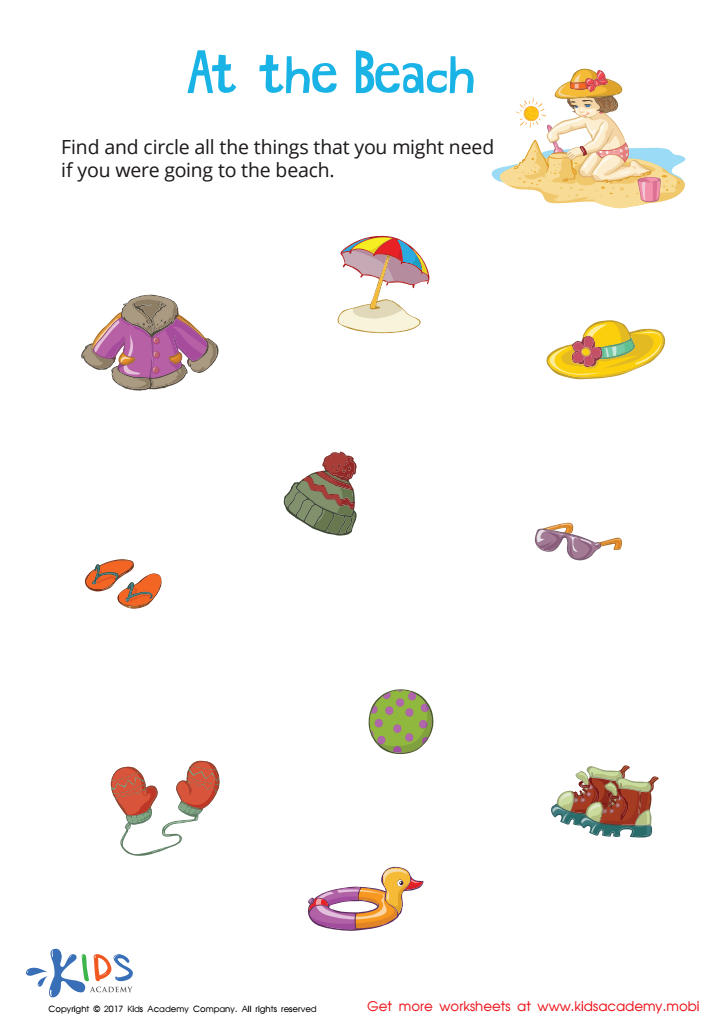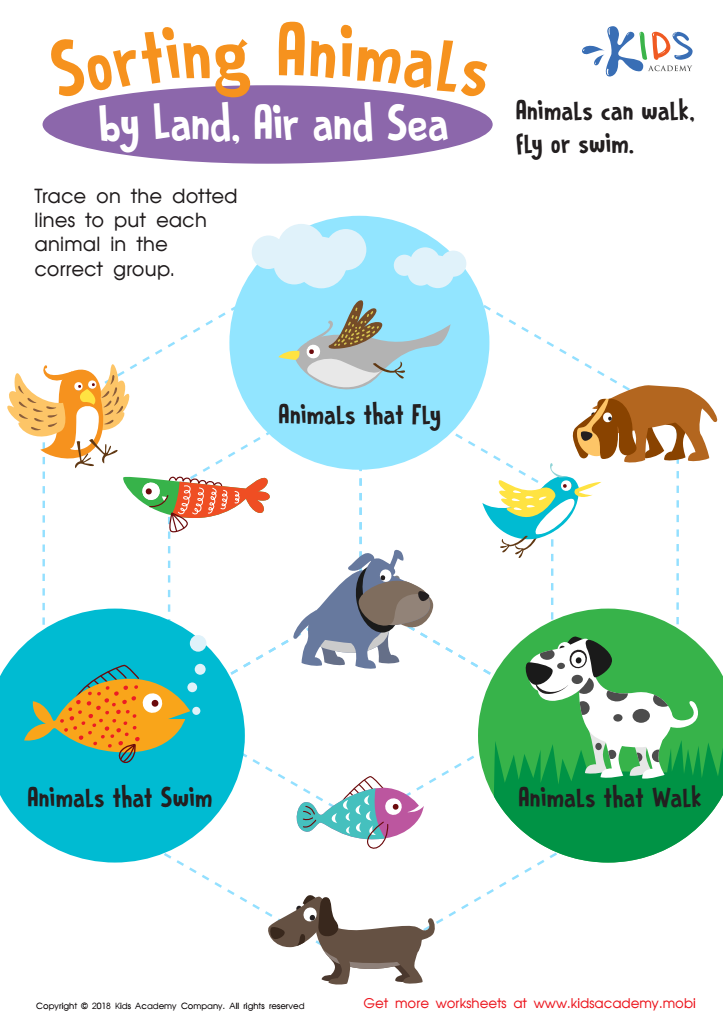Normal Sorting Worksheets for Ages 4-9
17 filtered results
-
From - To
Explore our engaging and educational Normal Sorting Worksheets designed for children aged 4-9. These interactive worksheets help young learners develop essential sorting skills through fun activities, enabling them to categorize colors, shapes, sizes, and objects effectively. Tailored to enhance critical thinking and fine motor skills, these worksheets provide a hands-on approach to learning. Each worksheet aligns with early childhood education standards, making them perfect for classroom use or at-home practice. Foster your child’s cognitive development while they enjoy sorting activities that spark their creativity and curiosity. Dive into the world of sorting today and watch your child's skillset flourish!


Sort and Count Fruits Worksheet


Sort and Count to the Moon Worksheet


Sorting Food Worksheet


Sorting Animals in 3 Groups Worksheet


Sorting Shapes - Part 3 Worksheet


Recycle Sort Worksheet


Sort the Same Group 2 Different Ways: Cars Worksheet


Sorting Animals Worksheet


At the Beach Sorting Worksheet


Sort the Same Group 2 Different Ways: Animals Worksheet


Make the Same Pattern Worksheet


Sorting Animals by Land, Air and Sea Worksheet


Matching and Sorting for Kindergarten: Assessment 1 Worksheet


Sorting by Size Worksheet


Heavy or Light? Worksheet


Sort and Count Candy Worksheet
Normal Sorting, or the process of categorizing objects based on shared attributes, is a fundamental skill for young children, especially those aged 4-9. This skill goes beyond mere organization; it lays the groundwork for critical thinking, problem-solving, and logical reasoning. As children sort objects, they engage in exploration and observation, learning to identify similarities and differences. This not only enhances their cognitive development but also boosts their vocabulary as they learn to describe the characteristics of the items they are sorting.
Moreover, Normal Sorting promotes mathematical concepts such as classification, patterns, and sequencing. Understanding these concepts is essential for later math skills, as they are foundations for concepts like addition, subtraction, and more complex problem-solving. In a social context, sorting activities encourage collaboration and communication among peers, fostering important interpersonal skills.
Parents and teachers should incorporate Normal Sorting into everyday activities and as part of learning experiences. Simple tasks, like sorting toys, objects from nature, or household items, can make learning engaging and fun. This investment in children's early sorting skills will yield benefits across multiple areas of learning, shaping them into more confident learners and helping them thrive in future academic endeavors.
 Assign to My Students
Assign to My Students






















